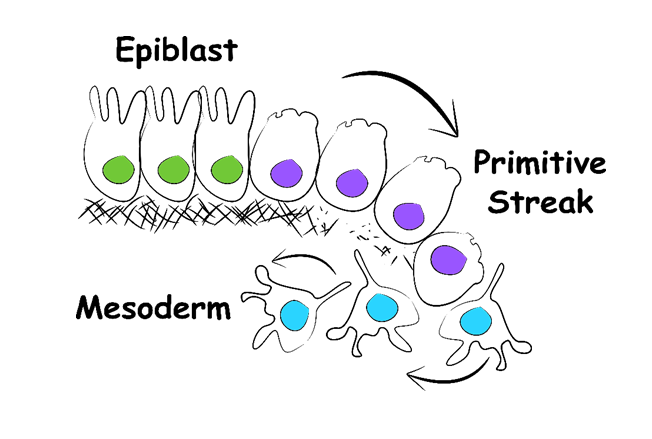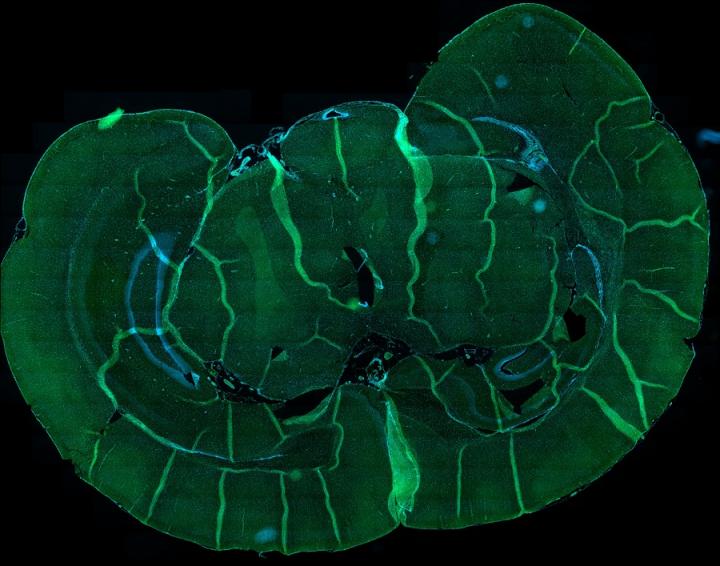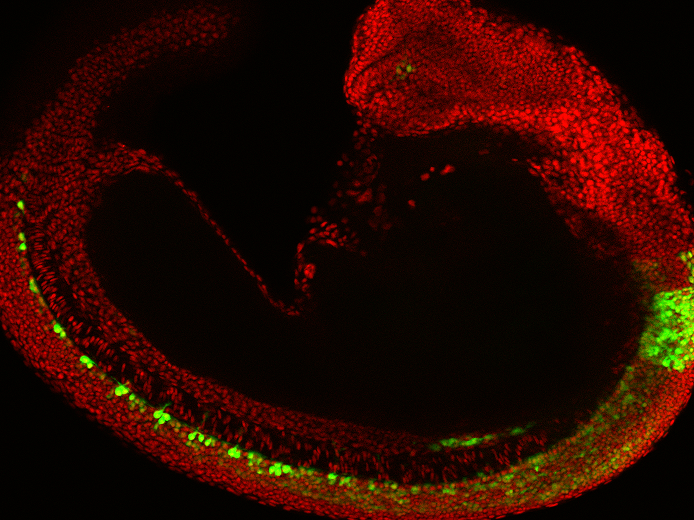Exemplar research projects
Tissue Repair PhD and rotation project examples
Recent rotation and current PhD research projects
Cardiovascular:
- The role of Gata3 and the cell cycle in haematopoietic stem cell generation
- Defining the transcriptional architecture of endothelial-to-mesenchyme transition in vascular pathophysiology
- Discovery of novel regulatory pathways critical for haematopoietic stem cell functions
- Targeting endothelial cell plasticity in repair and regeneration of the vasculature
- Functional heterogeneity of endothelial progenitor cells: implications for endogenous tissue regeneration
- Post transcriptional RNA modification and cardiovascular repair and regeneration
Developmental biology
- Title Role of Notch signalling in mesodermal differentiation of neuromesodermal progenitors
- Lineage decisions of embryonic stem cells: exploring the links between morphogenesis and differentiation.
- Do changes in cell organisation and orientation modulate mesoderm induction?
- Emergence of haematopoietic stem cells in the human embryo: gene expression analysis.
Kidney
-
Cellular senescence in kidney fibrosis
Liver
- Pluripotent stem cell-derived macrophages as therapeutic tool in the treatment of acute liver injury
- Neutrophils in paracetamol induced liver injury and regeneration
- Transplantation of stem cell-derived macrophages to resolve hepatic necrosis
- Optimizing differentiation condition of chemically reprogrammed liver progenitors
Lung/peritoneum/ovaries
- The role of RELMα in macrophage differentiation and survival
- The role of peritoneal macrophages in scar-less repair of ovaries
Nervous system
- Investigating the role of mertk in zebrafish spinal cord repair
- Heterogeneity of oligodendroglia in multiple sclerosis tissue
- The role of macrophage phagocytosis in spinal cord regeneration
- Live imaging and genetic analysis of metabolic reprogramming during tail fin regeneration in zebrafish
- Characterization of myelination in the CNS of zebrafish Caspr mutants
- The role of new macrophage genes in successful spinal cord repair
- Investigating human brain lesions for regenerative targets
- Mechanisms of Kv1 channel clustering in remyelination
Skin
- Gene expression analyisis of skin organoids
- Investigating the interaction between skin extracellular matrix and macrophages
- Profiling the communication between neurons and stem cells in mouse ESC-derived skin organoids
- The importance of cutaneous nerves in efficient wound healing
- Regulation of macrophage polarization by healthy and fibrotic extracellular matrix in skin
- Reinnervation of healing skin wounds: the interaction between nerves and cutaneous stem cells
Stem cells
- The role of Gata3 and the cell cycle in haematopoietic stem cell generation
- Reprogramming roadblocks during iPSC generation.
- The role of the epitranscriptome in haematopoietic stem cell fate choice.
- Novel regulatory mechanisms controlling haematopoietic stem cell biology.
- Macrophages derived in vitro from human pluripotent stem cells: a tool to manipulate macrophage phenotype and function and a potential source of cells for therapy.

Darren Wisniewski
Third year Tissue Repair PhD student; Lowell Lab (CRM) & Feng Lab (CIR)
Changes in cell fate result from the effects of extracellular signals on gene expression. However, emerging evidence suggests morphological changes can also regulate cell fate. For his PhD, Darren investigates how morphological changes can influence mesodermal differentiation. Using in vitro biophysical systems, he is modelling and manipulating the organisation of pluripotent cells undergoing differentiation. Using bio-image analysis software he can correlate transcription factor expression with morphological features. Identifying these morphological correlations will lead to the development of strategies to precisely perturb cell-cell organisation and assess the ability of morphology to regulate cell fate. Some of his findings are reported in a recent paper in Development (Blin et al, Development (2018) 145, dev166025. doi:10.1242/dev.166025)

Sophie Quick
Third Year Tissue Repair PhD Student; ffrench-Constant Lab (CRM) & Williams Lab (CRM)
Sophie studies endothelial cells in small vessel disease. Cerebral small vessel disease is the leading cause of vascular dementia. Studies using an animal model indicate endothelial cell dysfunction as the first change in the disease, prior to white matter changes. Sophie’s analyses of disease mechanisms upstream and downstream of dysfunction in this model indicate that endothelial cell dysfunction in cerebral small vessel disease is associated with white matter vulnerability. Sophie is now seeking to translate her findings to human disease.
Isaac Shaw
Final Year Tissue Repair PhD Student; Peault Lab (CRM) & Hughes Lab (CIR)

Isaac worked in two labs across two different centres in the Little France campus, the MRC Centre for Regenerative Medicine and the MRC Centre for Inflammation Research. He studied how ageing affects Perivascular Stem Cells (PSCs), a heterogenous cell population of the perivascular niche that reside around blood vessels and contribute directly and indirectly to tissue maintenance and wound healing. As we age, our ability to maintain organ function and to repair damage deteriorates in all parts of the body. Using murine models of kidney disease, and in vitro and in vivo techniques, Isaac was investigating how the populations of PSCs in organs change over time and assessed whether changes have an effect on the cells’ ability to do their job. This might provide insights into the impact PSCs have on health, disease and regeneration. Isaac was also testing potential new treatments for acute kidney injury, assessing the distribution of cell surface markers and measuring injury and regeneration in kidneys following the application of candidate drugs.
Jill Williamson
Final Year Tissue Repair PhD Student; Lyons Lab (CDBS) & ffrench-Constant Lab (CRM).
Myelination is essential for normal nervous system development and function, and disruption of the myelin sheath and associated axons is associated with many human diseases including Multiple Sclerosis (MS). Jill's PhD project aims to determine whether distinct neuron subtypes exhibit differences in how they regulate their myelination and remyelination. Jill is using zebrafish as a model organism to follow the myelination of individual axons in real time, and performs manipulations on neuronal activity to see how this affects the myelination of individual axons. She aims to compare distinct neuron subtypes to determine whether there are differences in how certain neurons use their electrical activity to regulate their myelination throughout life.

Tess McCann
Final Year Tissue Repair PhD Student; Becker Lab (CDBS) & Wilson Lab (CRM)
Tess investigated signalling pathways during spinal cord neuroregeneration in zebrafish in the labs of Prof Becker (Centre for Discovery Brain Sciences) and Prof Wilson (Centre for Regenerative Medicine). Unlike mammals, zebrafish have repair mechanisms that allow functional recovery after a spinal cord lesion. Tess was using both larval and adult zebrafish to study different signalling pathways that play a role in neuroregeneration after a spinal cord injury. Her studies have identified a number of drug compounds that are able to alter the numbers of motor neurons after a lesion and Tess has made transgenic zebrafish which allowed her to specifically upregulate signalling pathways in the progenitors within the spinal cord. For her research Tess was using a range of techniques, including zebrafish husbandry, drug treatment assays, histology, immunohistochemistry and imaging.

